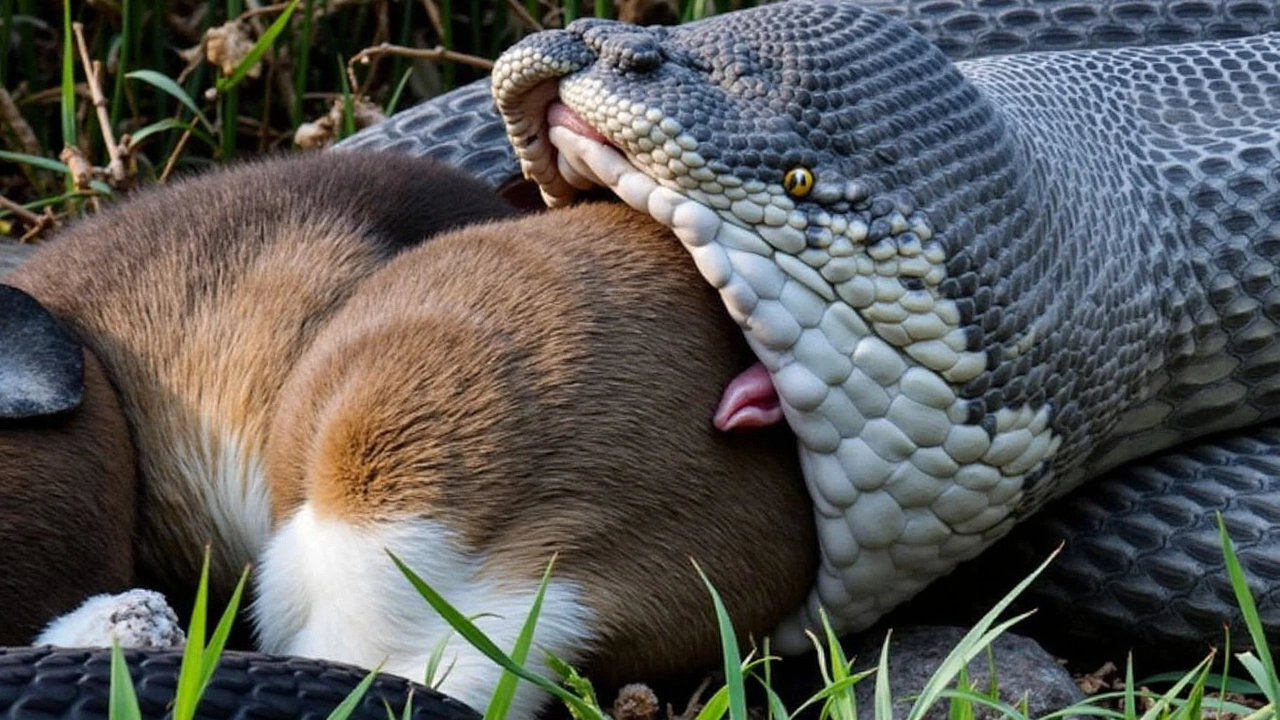Burmese python: identification, risks and what to do if you find one
Burmese pythons are large, nonvenomous snakes native to Southeast Asia but now famous as invasive giants in places like Florida. They can reach lengths over 12 feet and weigh more than 100 pounds, though most wild encounters involve juveniles or subadults. Their skin shows dark brown blotches on a tan background, giving a camouflaged, chain-like pattern. These snakes are powerful constrictors; they squeeze prey until it stops breathing rather than using venom.
They prefer warm, wet habitats — marshes, swamps, river edges and tall grass. Mostly nocturnal, they hunt mammals, birds and sometimes reptiles. In areas where they are invasive, Burmese pythons pressure native wildlife and can reduce numbers of small mammals and ground-nesting birds. That makes them a conservation concern and a public-safety issue when they show up near homes and parks.
How to recognize a Burmese python
Look for a heavy-bodied snake with a distinct head wider than the neck and heat-sensing pits along the upper lip. The pattern of irregular dark blotches with light borders is a good visual clue, but juveniles can look different from adults. Their scales are smooth, and the tail tapers slowly rather than ending in a sharp point like some harmless water snakes. If you hear a large rustle in dense vegetation at night, it could be a hunting python moving toward prey.
What to do if you see one
Stay calm and keep distance; Burmese pythons are not venomous but can deliver a painful bite and will constrict if handled. Move pets and children indoors and block off small spaces where a snake could hide. Do not try to capture, kill or feed the animal yourself — that risks injury and can spread invasive populations when pets are released. Take clear photos from a safe distance and note the exact location, then call local wildlife control, park staff or a published invasive-species hotline.
If you own a python, secure its enclosure with locks, double-check heating and lighting, and never release it into the wild. Many regions require permits for large constrictor ownership; check local laws before you buy or transport a snake. If you can no longer care for a pet python, contact a licensed reptile rescue or an animal shelter that handles exotic animals.
To reduce encounters, seal gaps under sheds and porches, tidy brush piles, and avoid leaving pet food outdoors. Communities with known python problems often run removal programs and citizen reporting tools — use those systems to report sightings. Trained teams use humane capture methods and data from reports to monitor populations and protect native wildlife.
Burmese pythons are fascinating animals with impressive strength and survival skills, but when they end up outside their native range they become a real problem. Treat every sighting seriously: keep people and pets safe, document what you see, and get wildlife experts involved. That approach helps protect local ecosystems and keeps you out of harm’s way. Report sightings promptly; even one call can guide removal teams and reduce long-term impacts on local wildlife right now.

